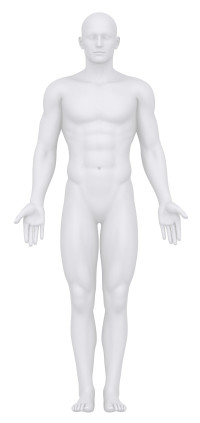
This is often a common concern from students. They practice yoga but wonder why they don’t feel more flexible. I had a conversation after class the other day with a student and she said that she felt her hip flexors (her words) were tight. She described feeling discomfort when stepping forward to Warrior 1 from Down Dog.
When you attend classes, even somewhat regularly, you expect to improve your flexibility. There are a number of things I discuss with students when they ask me questions like this. First, I always ask them what else they are doing for physical fitness. A student that practices yoga a few times a week but runs regularly, or better yet, is training for a marathon is going to have a different reaction to regular stretching versus a student who is not running long distances. The reality is that running is a very “hip flexor intensive” action, as is cycling and rowing, so it’s common for people to feel tight in their hips and lower back if they are participating in these activities.
The other factor to consider is how often is the student practicing? Generally, “more is better” but again, the reality is that most people can’t attend class every day. So, I like to ask them how often they are practicing, on average. This usually brings up my other main principle, which is this: “It’s better to practice regularly for short periods of time versus once or twice a week for an hour or more.” This concept brings up the idea that frequency is usually more important than duration when you’re looking for long term flexibility. Why? Because think of it this way: the challenge for most of us is our posture during the day, which is usually sitting and hunching. This creates tightness all over, mainly the lower back, pectorals and hip flexors. EVEN IF we go to yoga every day, that’s about 60-90 minutes of stretching surrounded by 8 or more hours of sitting and hunching. So, better to start or end each day with regular short spurts of stretching and integrate it into your day, while looking to the class as a more intensive exercise session.
This really hit home for me the other day when I was at the gym. It’s been a while since I belonged to a gym but I was looking for something different to do on my “off yoga” days. In fact, it’s been so long that cell phones weren’t as popular as they are now. I was struck by how many people were on their phone while on the bikes. I’m not talking about they were talking on the phone; I’m talking about them riding a stationary bike, while hunching over their phone reading email or whatever. Now, think about it. You’re on a bike for exercise, you need your lungs to breathe while your biking, you need to sit up so you have the most space available for your lungs to take in oxygen for your muscles. And, what do you do? You sit and hunch over your phone!
The last point to consider is that we should strive more for a middle ground when it comes to flexibility. When I think about the most ideal “middle ground” from an anatomical position, I think of “anatomical position” itself (pictured above). The body at standing is relaxed, the hips are neutral, the shoulders open, the standing position is steady and balanced. “Flexible” does not have to mean that you can touch your nose to your knees when you bow forward or flip up into Wheel with no sense of challenge. It means the body is comfortable and steady.
Keeping these things in mind can help us as we use our yoga practice as a tool to create overall health in the body.
